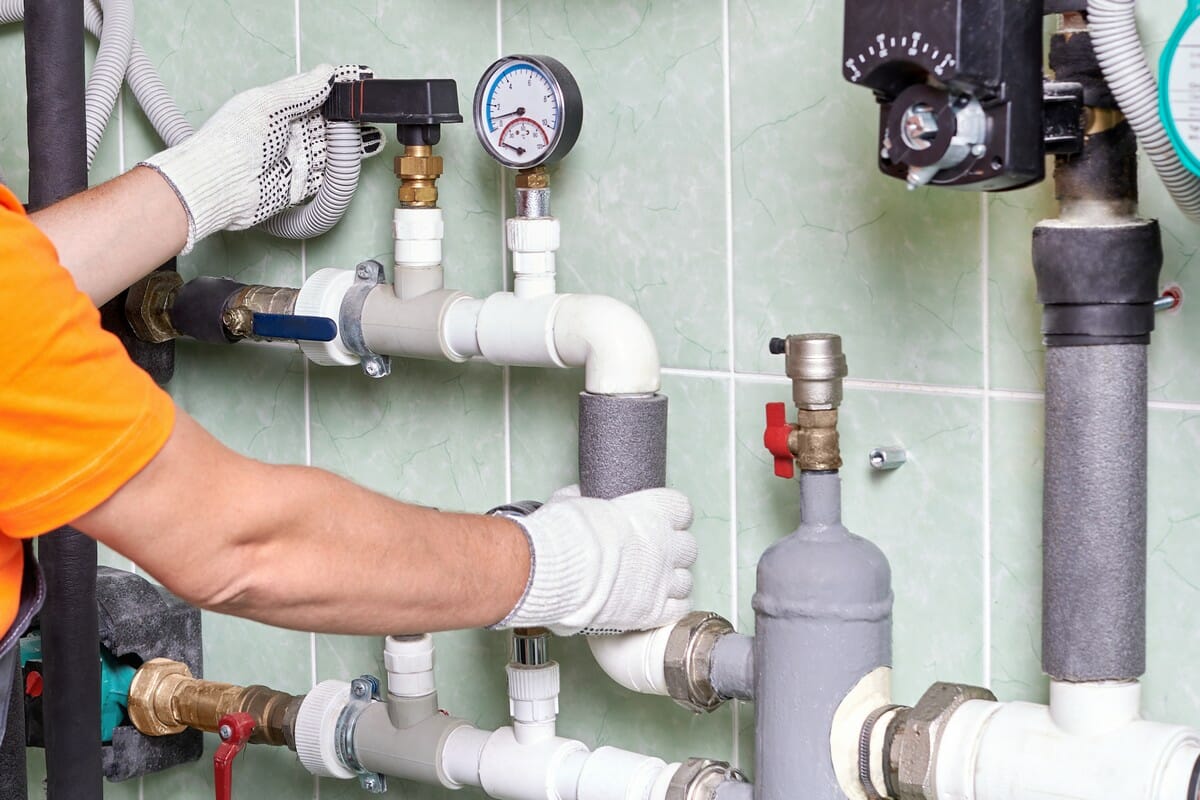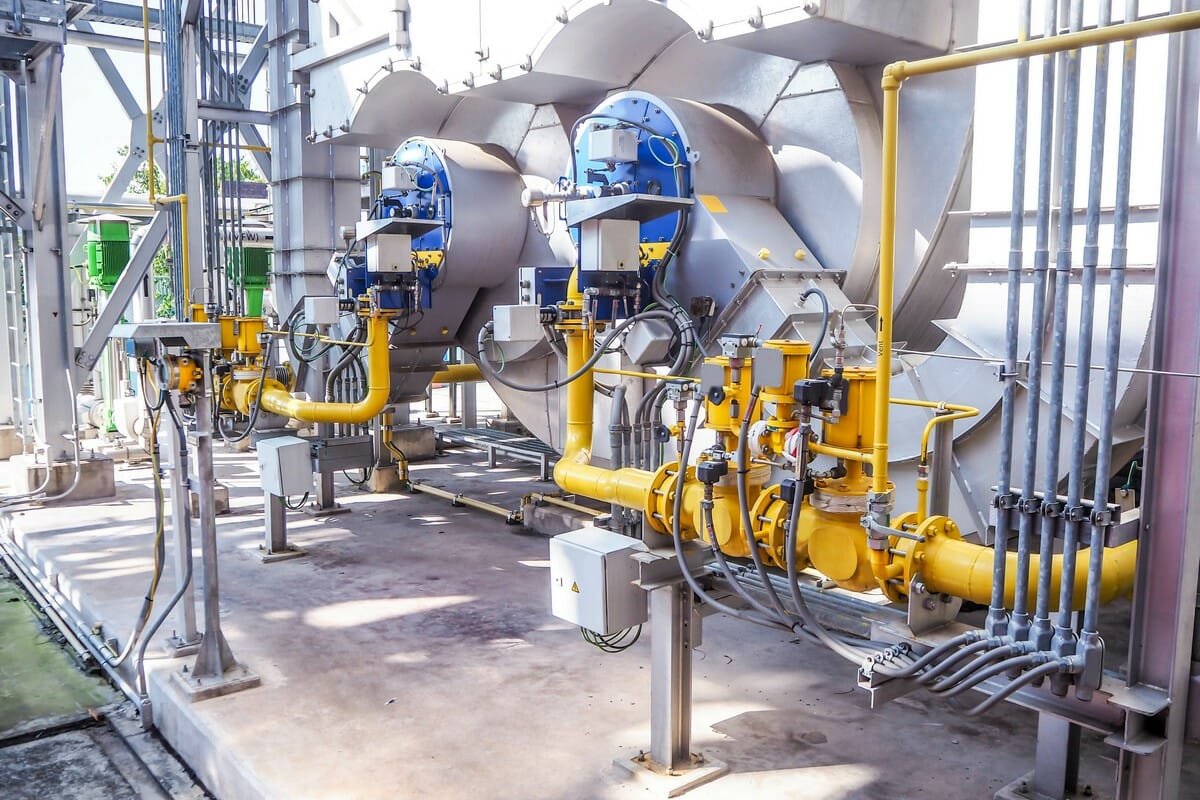Auxiliary and Emergency Heat Pump
Table of Contents
- 1 - What is the Difference between Auxiliary Heat and Emergency Heat on my Heat Pump?
- 1.1 - Our Guarantee
- 1.2 - How do I Know When I’m Using my Heat Pump’s Auxiliary Heat?
- 1.3 - Auxiliary Heat
- 1.4 - How Auxiliary Heat Functions
- 1.5 - Heat Pump Type
- 1.6 - Emergency Heat
- 1.7 - What does Emergency Heat do?
- 1.8 - What Should I do when the Emergency Heat is Turned On?
- 1.9 - Is Auxiliary Heat Expensive to run?
What is the Difference between Auxiliary Heat and Emergency Heat on my Heat Pump?
If you have taken a longer look at your thermostat, you might have noticed that it has a few additional heat settings: one called “auxiliary heat” and one called “emergency heat.” While most people are aware of these two settings, few people actually know the difference between them.

Sometimes heat pumps require a supplementary heating source and particularly when the weather is under 40 degrees. These supplementary heating sources can be indoor unit electrical-resistance heating, oil, gas or even hot-water back-up systems. Supplementary heating sources are known as second-stage or back-up heating. Your heat pump heats normally at the first stage.
Without using your first stage direct heat pump, emergency heat is when you intentionally switch on and use your “second stage” (supplementary heat) by itself.
Auxiliary Heat, on the other hand, automatically switches on when the unit can no longer transfer heat efficiently from outside air to the heat pump. This can happen when the outside is about 35-40 degrees, and the indoor temperature is about three degrees cooler than the setting of the thermostat.
This will be sensed by the thermostat and electric heat strips switched on automatically turning on the heat light “AUX” and so will deliver additional heat as required. It is important to point out that when outside temperatures rise, but your thermostat remains in “Aux Heat,” you should call for it to be serviced.
Auxiliary heat uses heating with electrical resistance which is a lot less efficient than your heat pump. A heat pump that remains stuck in AUX heat will therefore be running up the electric bill. If you use a heat pump, it is a good idea to increase your heat setting by just two degrees at a time to prevent operation of the auxiliary heat.
Please feel free to call The Mittens Heat Pumps UK on 01273 257407 if you have any questions. We are always here to help.
Our Guarantee
- Over Six Years Experience
- Unrivaled Experience
- An Exceptional Service
- Unbeatable Value For Money
- Industry-approved Scaffolders
- A Full Range of Heat Pumps Services
- Professional, Reliable and Diligent
- 100% Safety and Satisfaction
How do I Know When I’m Using my Heat Pump’s Auxiliary Heat?
This is a common question people ask us here at The Mittens Heat Pumps UK. Heat pumps are very efficient but they can also be confusing. To make the most of their efficiency, you need to be sure they are operating the way they are designed to operate.
To know whether you are using your heat pump in the manner in which it was intended to be used or whether you are piling up electricity bills using auxiliary heating, we need to consider how auxiliary heating works.
Auxiliary Heat
Auxiliary heat is a heating system that kicks in when the temperature drops below two or three degrees of what the temperature is set within a home or building. It also kicks in when someone decides that they’re cold, and turns the thermostat up in excess of three degrees.
Auxiliary heat is an integral part of heat pumping systems. Heat pumps have two units, one outside the house, and the other inside, which is the auxiliary heating system. The outdoor heat pump gets very cold on cold mornings, especially when the temperature drops below 32 degrees, and would take a long time to heat up the air inside the house. On mornings such as these, the auxiliary system will kick in to heat the home faster from the warmer inside unit. This happens until the outside temperature is warm enough for the outdoor unit to take over the indoor heating.
We Are Also Available to Offer Heat Pumps Related Advice
How Auxiliary Heat Functions
It is not a good thing when heat pumps struggle to draw warm air at temperatures below 35oF, so they need help to create the desired indoor temperatures. That is where the auxiliary heat of your heat pump comes in.
Auxiliary heat improves the warm air of your heat pump. Most auxiliary heat sources are electrical heat, using a strip of electrical coils similar to those in your toaster, which is why they tend to use a lot of electricity when running on auxiliary for a long time.

If your heat pump is no longer able to draw the necessary heat from the outside, your auxiliary heat will automatically jump in to help. This means that your heat pump still works hard to get that heat, but it needs only a boost, which is what the auxiliary heating does. Auxiliary heat increases the heat of your heat pump but it does not replace it, and when the temperature is stable enough, it shuts off, leaving your heat pump to work on its own.
So, to answer the question above, when you see the AUX ON or AUX HEAT sign on your thermostat, you can tell that the auxiliary heating of your heat pump is in use. Only when the heat pump cannot generate enough heat to warm your home or if your heat pump enters defrost mode should this heat setting kick in.
Usually, AUX heat costs up to 50% more than heat transfer, meaning if your system runs on AUX heat when it shouldn’t be, your heating bill is likely to be much higher than you would like it to be. In this case, our suggestion would be to contact a professional at the earliest opportunity. A skilled technician will be able to determine what the problem is and fix it so that you can stop spending money on high energy bills.
Heat Pump Type
Emergency Heat
Under normal circumstances, even in the coldest weather, your main heat pump should have no trouble keeping your home warm and comfortable. However, when an extreme cold period strikes, the system may not be able to keep up. Worse yet, the primary heat pump may cease to work altogether.
Here’s where your heating emergency comes in. If there’s an emergency and your heat pump stops working, your emergency heat is meant to be a true backup. The emergency heat completely takes over for your heat pump to heat your home, shutting down your heat pump.
You need to switch the setting on your thermostat from Heat to Emergency Heat, and this will turn off your heat pump and turn on your emergency heat. It is here that your energy efficiency will disappear and your high energy bills will reappear. Do not turn on the emergency heat unless your heat pump stops working. When the outdoor temperature drops below 35oF, do not switch to emergency heat as your auxiliary heat will automatically step up to supplement your heat pump.
However, if you find yourself in a situation where you must use your emergency heat, turn it on but then be sure to call one of our trained staff members at The Mittens Heat Pumps UK to come out to check your heat pump.
We Are Also Available to Offer Heat Pumps Related Advice
What does Emergency Heat do?
Many people assume that during especially cold weather, emergency heat is designed to be turned on by the homeowner, but that’s not quite correct. In emergency situations, the homeowner really should only switch on emergency heat when something happens to the heat source in the first stage, which is your heat pump.
For example, if your outdoor unit is damaged by a tree during a snow, you can switch on the emergency heat and then call an HVAC professional. Also, if your heat pump is out of order and shorts out, then you can turn on the emergency heat switch and call for an HVAC maintenance appointment. The point is, the emergency heat mode is meant to keep your home warm but only temporarily while you’re having your heat pump repaired. It is not intended to run that way indefinitely.
When you set your thermostat to emergency heat, your system bypasses the heat pump and accesses either the electric heat strip or the furnace heat from gas or oil directly. This can be expensive to run for extended periods of time. Remember, if your heat pump works properly, this setting should not be used, as the backup source will consume more energy than the heat pump especially if it uses electrical resistance heating as backup.
Contact The Mittens Heat Pumps UK at 01273 257407 for emergency service in your area if you have any questions about the emergency heat setting on your heat pump or if you would like to have a heat pump serviced or installed in your home.
We Are Also Available to Offer Heat Pumps Related Advice
What Should I do when the Emergency Heat is Turned On?
Heat pump systems come with a feature called emergency heat which can be switched on manually if the primary heating system doesn’t work or keep your home warm enough. The emergency heat setting is the backup stage of your heating system and is to be used only when the heat pump temperature is too low to be able to remove heat from outside, usually below 35 degrees Fahrenheit.
Your heating system can then use the secondary or backup source to supplement the heat, but if you force the system into emergency-heat mode it becomes the primary source of energy, which is not its intended function. Use emergency heat rarely. However, if you find that you are needing to run it on a regular basis, your system might need a qualified HVAC technician to provide servicing. The cost of running your home on Emergency Heat would be astronomical if you insist on using the emergency heat instead of getting an expert to detect the problem with your heat pump.
Also, switching to this mode, changes your heat source from the heat pump to the electric heat strip, which is considerably less efficient apart from being more expensive. This also places great strain on the backup element, which is only intended to be used for short periods of time in extreme circumstances.

Is Auxiliary Heat Expensive to run?
Since auxiliary heat uses electrical heat strips, it can handle more extreme temperatures. Unfortunately, this means that it is a lot more expensive than a heat pump’s conventional heat.
The auxiliary heat setting is however more energy-efficient and cost-effective than emergency heat. In auxiliary mode, your heat pump will make use of the outside air to warm up your home and assist the backup heat source, whereas you are forcing the backup heat system to do all the work when you switch your unit to emergency heat.
Reducing the use of auxiliary heat might be a good way to save money. A vital first step is to set a lower indoor temperature to limit the auxiliary heat and lower your heating costs. If it is 35 degrees outside, it is unreasonable to expect the system to maintain a temperature of 70 degrees indoors without using the heat strips. In other words, it will help to reduce the need for auxiliary heat when you are able to tolerate a cooler temperature inside your home. If your heat pump appears to be stuck in auxiliary heat mode and the outside temperatures are above 35 degrees, call The Mittens Heat Pumps UK professionals.
Auxiliary heat is less energy efficient than your heat pump, and drops in temperature is what activates it only for short periods of time. Prolonged use of auxiliary heat can result in your energy bill being much higher than it should be. If you have heat pump problems contact The Mittens Heat Pumps UK as soon as possible. We can help you identify the source of your problem and guide you towards the most efficient, low-cost solution.
Please do not hesitate to call our office for more information about auxiliary heat, or to have one of our team members come by to assess the health of your system. Call us at 01273 257407, or book a visit online.
Get in Touch With us for Your Heat Pump Hire Quotes
